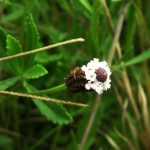Aside from beautifying your yard, many of the approved WaterSaver Landscape Coupon plants also double as hosts for butterfly and moth caterpillars.
Many of us are familiar with the monarch butterfly and how the caterpillars only eat milkweeds (available on the coupon). But several other butterflies have evolved to use different plants as their caterpillar food source.
Aside from beautifying your yard and providing nectar for butterflies, many of the approved plants for the Watersaver Landscape Coupon also double as host plants for butterfly and moth caterpillars.
|
|
|
|
|
|
|
Planting butterfly host plants is just as important as providing nectar for attracting butterflies to your landscape. Additionally, a more diverse selection of host plants means a higher diversity of visiting butterflies.


 Snakeherb (Dyschoriste linearis)
Snakeherb (Dyschoriste linearis) ogfruit (Phyla nodiflora)
ogfruit (Phyla nodiflora) Flame acanthus (Anisacanthus quadrifidus)
Flame acanthus (Anisacanthus quadrifidus) nland sea oats (Chasmanthium latifolium)
nland sea oats (Chasmanthium latifolium) Cenizo (Leucophyllum frutescens)
Cenizo (Leucophyllum frutescens) noxious to most herbivores, but the genista broom moth caterpillars can eat them. These small caterpillars don’t do much damage to mountain laurels and are rather rare most years. But they’re a good food source for adult bats.
noxious to most herbivores, but the genista broom moth caterpillars can eat them. These small caterpillars don’t do much damage to mountain laurels and are rather rare most years. But they’re a good food source for adult bats. can buckeye (Ungnadia speciosa)
can buckeye (Ungnadia speciosa)